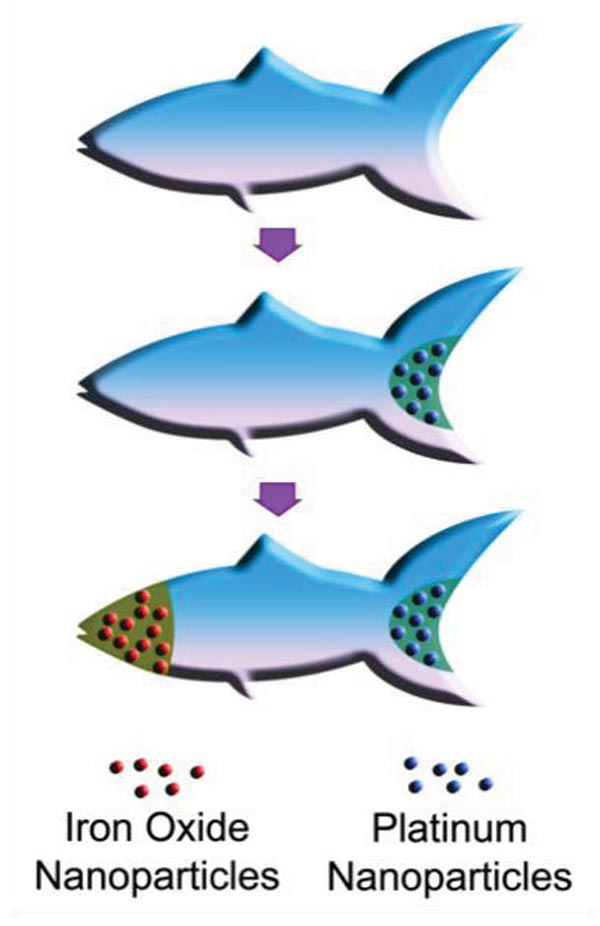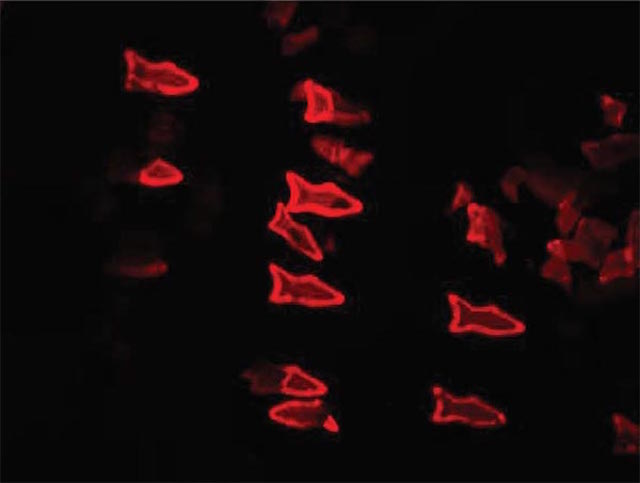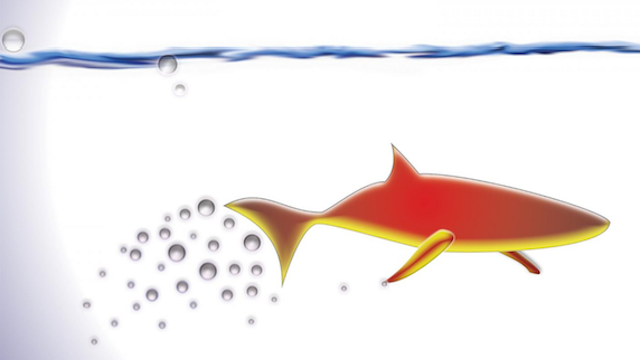In the not-too-distant future, tiny robotic fish could be cruising around inside our our bodies, delivering drugs and cleaning up toxins. This week, engineers at the University of San Diego unveiled the first prototype: a chemically powered, magnetically controlled swimmer.
It’s called the “microfish”, and true to its name it looks quite a bit like its biological, macroscopic brethren. But that’s where the similarities end. This fish was manufactured using a clever new 3D printing technique — one that could allow engineers to built complex microbots capable of performing all sorts of sophisticated tasks, from targeted drug delivery to environmental cleanup.
“We have developed an entirely new method to engineer nature-inspired microscopic swimmers that have complex geometric structures and are smaller than the width of a human hair,” UC San Diego nanoengineering PhD student Wei Zhu said in a statement. “With this method, we can easily integrate different functions inside these tiny robotic swimmers for a broad spectrum of applications.”

The UCSD team printed the microfish using microscale continuous optical printing (µCOP), a technology of their own design. The key innovation here is an optical chip containing approximately two million micromirrors. Each mirror is individually controlled to project UV light onto a photosensitive material that solidifies on exposure. Using this tool, the engineers can print hundreds of 120-micron-long, 30-micron-thick fish bots at a time.
A key advantage of the new technology is the ability to incorporate layers of functional nanoparticles into a design. As a proof-of-concept, the researchers loaded platinum nanoparticles into the microfishes’ tails. When dunked in hydrogen peroxide, these particles undergo a chemical reaction that propels the fish forward. Voila, a power source. They also loaded iron oxide particles into the fish heads, allowing the bots to be magnetically controlled.
Finally, the researchers incorporated the toxin-neutralising nanoparticle polydiacetylene (PDA) throughout the microfish bodies. When PDA binds with toxins, it becomes fluorescent, emitting a red light. The intensity of a bot’s red glow offers a quick way of gauging the toxicity of its environment.

Fluorescent image of PDA-loaded microfish glowing red to indicate an environmental toxin.
“The neat thing about this experiment is that it shows how the microfish can doubly serve as detoxification systems and as toxin sensors,” said Zhu.
The detox fish are undeniably clever, but they’re only the beginning. Microfish could one day be used to deliver targeted packages of medicine within a human bloodstream, or to perform microscopic surgeries.
What’s more, we could get creative and start printing other bio-inspired shapes.
“With our 3D printing technology, we are not limited to just fish shapes. We can rapidly build microrobots inspired by other biological organisms such as birds,” said Zhu.
I’ll leave you with the weird and fascinating image of humans deploying invisible menageries of robotic manta rays, sharks and cuttlefish to remove toxins from our water supply. You can’t deny that the future will be interesting.
Picture: W. Zhu and J. Li, UC San Diego Jacobs School of Engineering
